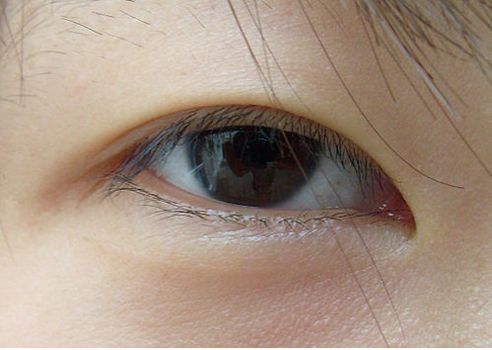Reading time: Less than 1 minute
Increase your vocabulary and you’ll make your writing much more precise. That’s why I provide a word of the week. Today’s word: epicanthic…
Even though there is a doctor in my family, my understanding of medical terminology is weak. (I was always a word nerd, never a science geek.) Thus, when I recently came across the adjective epicanthic, I had no idea what it meant.
I encountered it in the novel Little Sister by Barbara Gowdy. Here is how she used it, with little context allowing me to guess the meaning:
He had grey, slightly epicanthic eyes.
It turns out that this term describes the skin fold of the upper eyelid, covering the inner corner of the eye. (See photo, above, of a South Korean person with such a fold.)
Various factors influence whether someone has these folds, including ethnicity, age, and certain medical conditions. Epicanthic folds typically appear in Asian populations, Indigenous Americans and, more rarely, Europeans (especially Scandinavians.) As well, about 60% of individuals with Down syndrome have prominent folds like this. Most fetuses have such folds but lose them after three to six months of gestation.
The origin of the word is Greek and Latin. As in the word epiphenomena the epi, is Greek, meaning “upon, at, close upon (in space or time), on the occasion of, in addition, also.” And the cantus part of the word means “rim of wheel.”
An earlier version of this post first appeared on my blog on Nov. 1/17.


